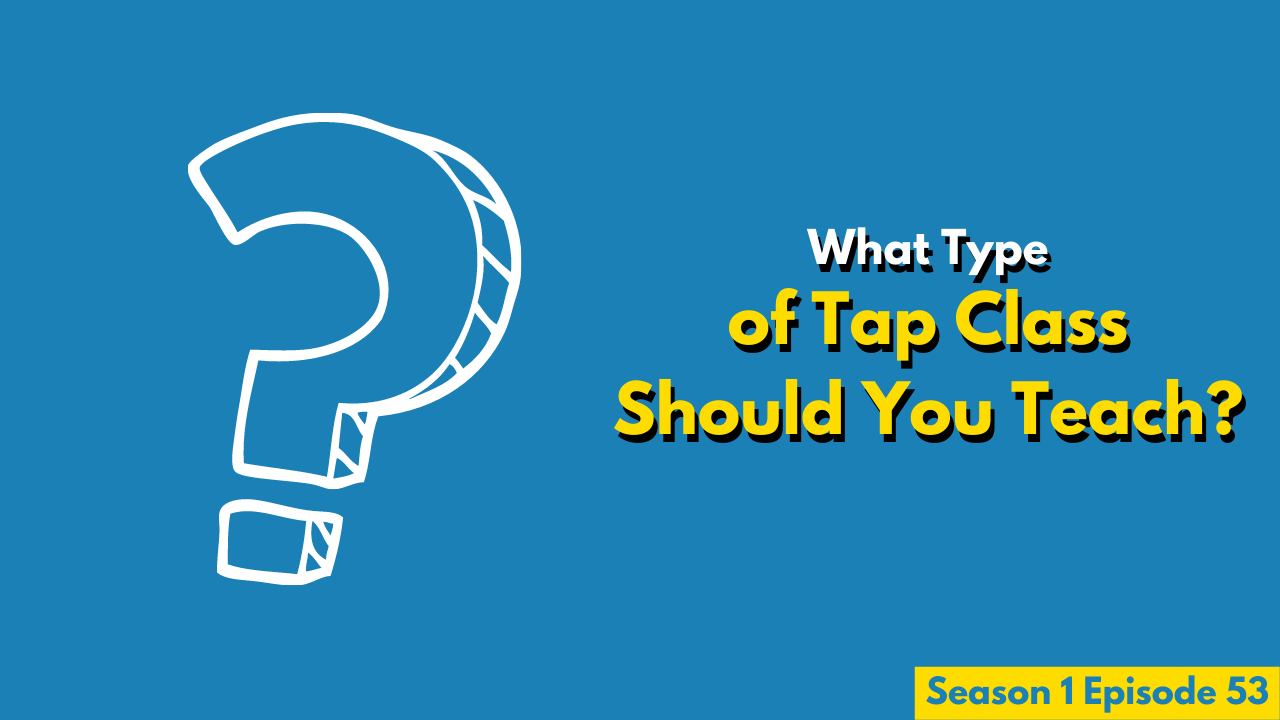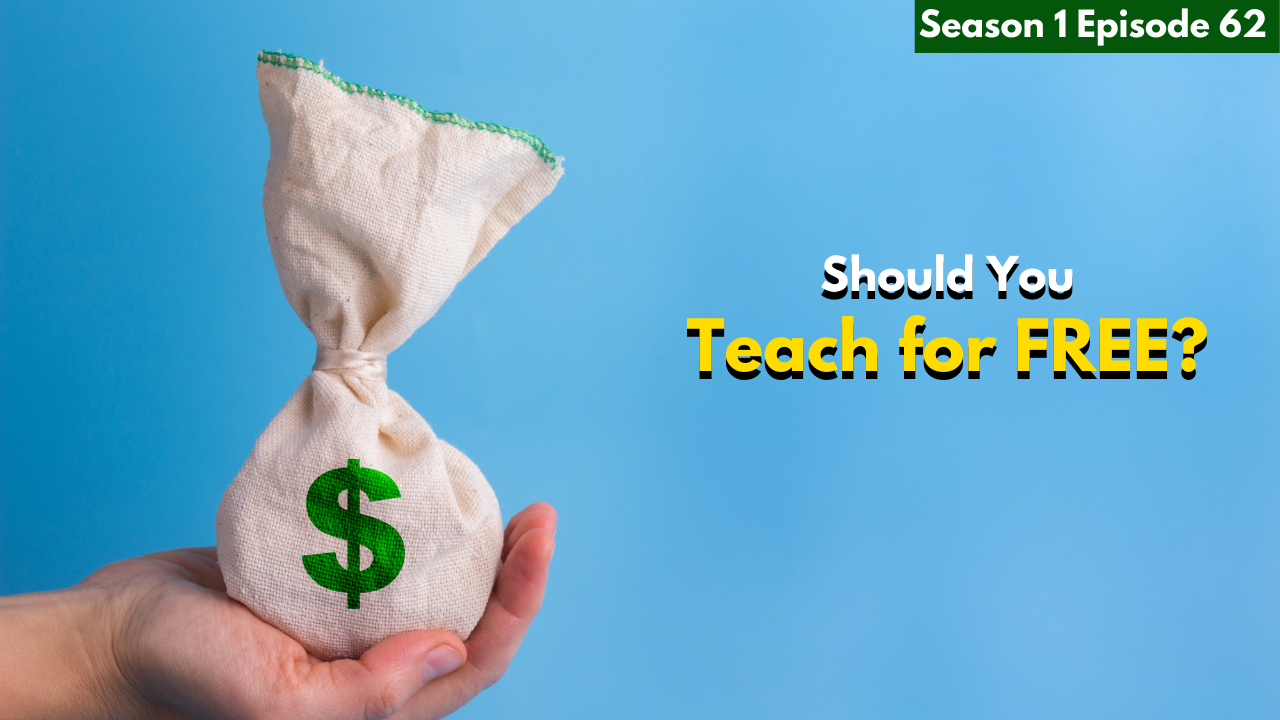What type of tap classes should you be teaching?

Published on December 5th 2019 by Hillary-Marie
An interesting topic popped up in our weekly session of the iTapOnline™ Teacher Training Program and we were discussing the different types of tap classes and the best ways to approach them.
Not only were we discussing the different types of tap classes, but we were discussing which ones you SHOULD be teaching. There’s a big difference between the classes you ARE teaching, the classes you WANT to teach, and the classes that you SHOULD be teaching.
I’ll dive deeper into that later, but let’s first start with the different types of Tap classes and the joys and challenges of both.
10-Month Season
A 10-month season is most common in the U.S., typically August to May or September through June with a culminating recital at the end of the season.
Positives of a 10-Month Season:
Long-term commitment from the students, which gives you the opportunity to truly invest in them.
You can go deep with them because you have the time to develop your ideas
Challenges of a 10-Month Season:
It can get tiresome, having the same teaching schedule week to week to week.
A long-term commitment, NOT for those who want to hit the road often.
Who is a 10-month Season good for? 10-month season classes are best for those teachers who are committed to the long-term growth and development of their students.
6-Week Sessions
6-Week Sessions are generally focused on a specific theme or piece of repertoire and typically geared towards Adult students.
Positives of 6-Week Sessions:
You have a clear start to finish commitment from the students.
You can focus on specific material for that period of time.
Challenges of 6-Week Sessions:
You have to stay committed to your theme, so you need to choose your theme wisely.
Who is a 6-Week Session good for? 6-week session classes are best for those teachers who want to develop a specific theme or focus, but also welcome new students regularly throughout the season.
Drop-In Classes
Drop in classes are “one and done” and mostly cater to higher-level children/teen dancers, or adult dancers.
Positives of Drop-In Classes:
Something (and someone) new every single week, you’ll never get bored!
When class is over, it’s truly over. You wash your hands clean of the class.
Mostly geared towards Adults (which is nice because they’ve CHOSEN to be there)
Challenges of Drop-In Classes:
Drop-ins can often lead to mixed levels in the class (check out Episode 009 “How to Manage Multiple Levels in the Same Class” for how I handle that).
Attendance can be spotty, especially during the Holiday seasons.
Students can be non-committal, BUT, if you’re nailing it, you should have some sort of regular attendance and following growing.
Who are drop-in classes good for? Drop-in classes are great for teachers who are super comfortable managing multiple levels in the same classes and teachers who have a large bag of exercises and knowledge to pull from after they assess the level of the room during warm-up.
Guest Artist Workshops
Guest Artist Workshops are similar to drop-in classes, but you’re traveling to different studios or conventions.
Positives of Guest Artist Workshops:
You get to meet new dancers in new places
Something new every time (truly)
The pay is higher than weekly classes
Challenges of Guest Artist Workshops:
You have to negotiate your pay rate, schedule, dates, etc.
Traveling is involved
There aren’t as many opportunities for Guest Artist Workshops as there are weekly teaching gigs
The potential for mixed levels are very high and you truly have NO idea what you’re talking into when you’re a guest artist
Who are Guest Artist Workshop opportunities good for? Similar to drop-in classes, a guest artist teacher needs to be extremely comfortable with managing multiple levels in the same class. It’s not a great gig for the teacher that likes to plan ahead because you truly won’t know the level of the students until you’re in the room with them. This type of gig is also good for teachers who know how to INSPIRE students and offer them something new that they’re not currently receiving from their weekly teachers.
Guest Choreographer Gigs
Personally, I don’t do guest choreography anymore. I’m not into it. I prefer to choreograph on dancers that I know and being a guest choreographer doesn’t always give you that opportunity unless you’re circling back around to the same studios year after year. Also, guest choreographer work typically lends itself towards competition dance, which isn’t my thing (have you checked out episode 027, “Are Dance Competitions Broken?”
The positives and negatives of Guest Choreography Gigs are identical to Guest Artist Workshops.
Who are Guest Choreographer Gigs for? Guest Choreographer gigs are great for teachers and choreographers who are extremely flexible. You should come in with your idea of the choreography, but you have to be ready to change it, because again, you have no idea of the students’ level or ability until you get there. You also need to be very organized and realistic. Make sure that you give them a piece that’s attainable (challenging, yes, but attainable). You can’t less them with a mess of footwork they barely understand and breakdown videos hoping they get through it. Make sure the choreography is something they can strive for, but also attainable and within their skillset, and be sure to give them ALL of the breakdown videos that they need to be able to work on cleaning the piece appropriately without you.
How to decide which classes are best for you?
Question for you… what type of classes do you WANT to teach?
What’s your superpower? Are you crushing it with the 5-7 year old Beginner Tap I kids, or the ages 7-10 with a couple of years experience? Or maybe Beginner level Teens are your forte. Maybe it’s Intermediate level adults. Which classes are you just AWESOME at?
What I find fascinating, is that when I discussed with this the iTap Teachers, I found that almost no one was embracing their Super Power.
Are you embracing your Super Power?

